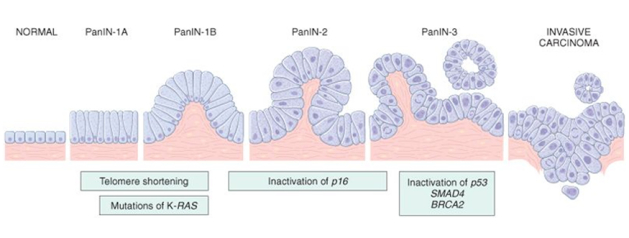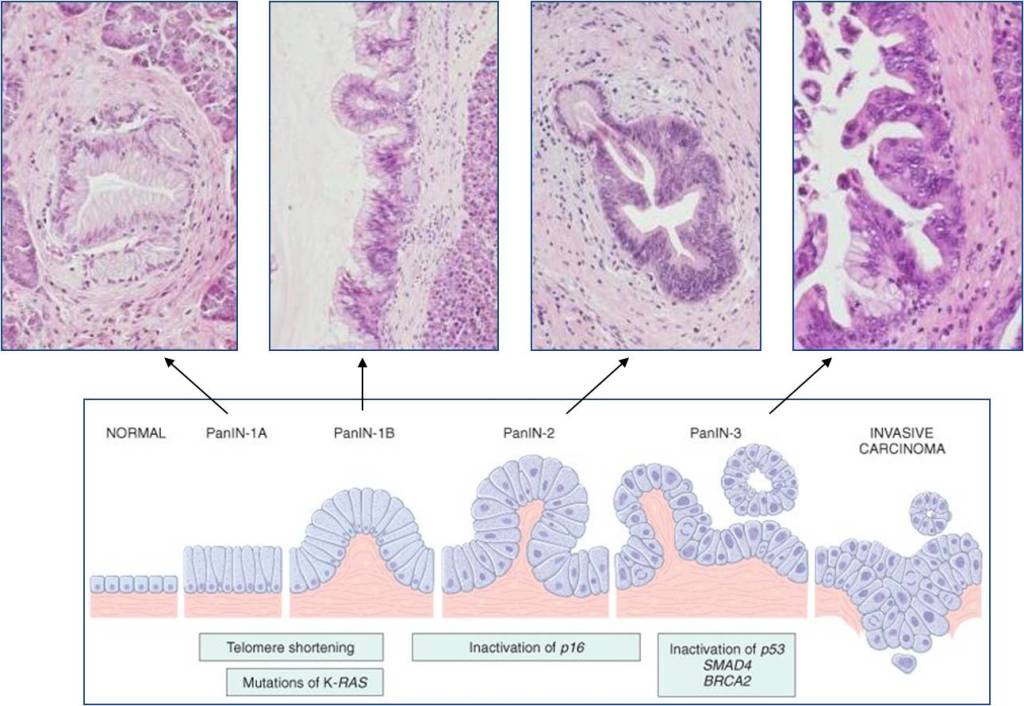41st EORTC –PAMM winter meeting: February 13th-15th, 2020 in Stockholm
febbraio 15, 2020Preneoplastic lesions
Recognition and ablation of preneoplastic or in situ stage neoplasms would be an ideal method for prevention of cancers. This approach is particularly difficult for internal organs such as the pancreas that are not conveniently visualized or accessible for physical examination, biopsy or evaluation by cytologic studies. Thus, there is relatively little prospective experience in the recognition of preneoplastic lesions of the human pancreas.
Several retrospective approaches have been utilized in attempts to recognize such lesions. In our studies we evaluated selected miRNAs in non-invasive and/or invasive IPMNs, as well as genetic aberrations in pancreatic intraepithelial lesions.
Our main articles related to this project
- Caponi S, Funel N, Frampton AE, Mosca F, Santarpia L, Van der Velde AG, Jiao LR, De Lio N, Falcone A, Kazemier G, Meijer GA, Verheul HM, Vasile E, Peters GJ, Boggi U, Giovannetti E.
The good, the bad and the ugly: a tale of miR-101, miR-21 and miR-155 in pancreatic intraductal papillary mucinous neoplasms
Ann Oncol. 2013 Mar;24(3):734-41
Link: www.ncbi.nlm.nih.gov/pubmed/23139258 - Funel N, Morelli M, Giovannetti E, Del Chiaro M, Pollina LE, Mosca F, Boggi U, Cavazzana A, Campani D.
Loss of heterozygosity status of D9S105 marker is associated with downregulation of Krüppel-like factor 4 expression in pancreatic ductal adenocarcinoma and pancreatic intraepithelial lesions
Pancreatology. 2011;11(1):30-42
Link: www.ncbi.nlm.nih.gov/pubmed/21412023
For our ongoing studies on the role of micorRNA in preneoplastic lesions, our collaborator, Prof. Campani recently obtained a grant on “OMICS signature in Intraductal Papillary Mucinous Neoplasms (IPMNs) progression”, as reported in the webpage of Istituto Toscano Tumori (ITT): www.ittumori.it






